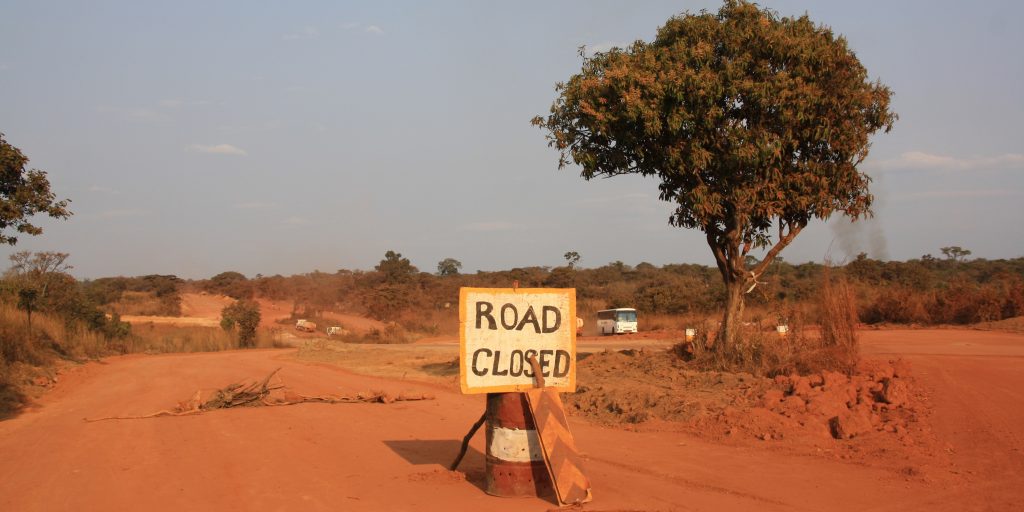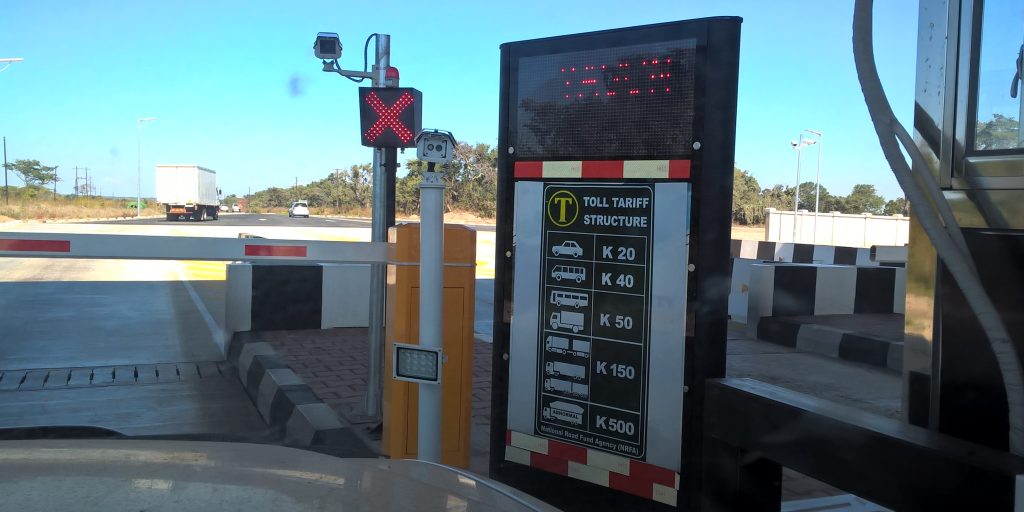
TIM ZAJONTZ, Invited talk at the 4th St Andrews Africa Summit, 24 February 2018, Hotel du Vin, St Andrews
Thanks for this warm introduction. As it was mentioned, my name is Tim Zajontz, I am a PhD student at the School of International Relations here in St. Andrews. I am also a research associate and guest lecturer at Stellenbosch University in South Africa, where I did my Master’s some years ago. I have been working in German politics as well as in the European Parliament, before I came back to University. My PhD research deals with the spatial political economy of the TAZARA Corridor, that economic space connecting landlocked Zambia with Tanzania’s port of Dar es Salaam. As you have heard, I am also the chairperson of a Germany-based, non-profit organisation called Freundeskreis Uganda which is partnering with social projects in Uganda.
The reason why I am speaking here today is actually quite ironic considering the theme of this conference. The colleague from Burundi who was supposed to speak to you today under the theme of “Identity and empowerment: the African Evolution”, could not come because of visa complications. Without wanting to unjustly over-interpret this incident, I think it is worth asserting that, quite clearly, there are not only empowering but also disempowering circumstances for the African evolution… I really hope that we get to hear from Marguerite Barankitse at another occasion.
When I asked myself what I could possibly contribute to the theme of this conference, I felt immediately reminded of what one of my South African friends once summarised quite well when we were discussing the student protests in South Africa. In this discussion we obviously touched upon identity and empowerment but also on issues of racism, decolonialisation, patriarchy and capitalism. While I fully agreed with her about the necessity of the student protests, we had differing opinions about some of the strategies taken by some segments of the student body on South African campuses. When our conversation started to move in circles, she said to me: “Tim, you are an able-bodied, cisgender, heterosexual, white man from Germany. You will never fully understand our struggles”. My friend is very right. So, with this self-reflective disclaimer concerning my own positionality, how could I – again, the male European – make a worthwhile contribution to this conference on the African Evolution?
I thought the best I can do is sharing a few of my experiences from various African places and settings and try to relate them to the overall theme of this conference. Thereby, I am focusing more on the ‘empowerment’ aspect of the theme, more precisely on aspects of social and economic empowerment in the context of Africa’s transport infrastructure boom. As I do not want to bore you with too much academic jargon and numbers, my talk will be rather anecdotal and, considering the huge scope of the topic, necessarily cursory. Yet, I hope to bring across not only that transport infrastructure development is not as boring a topic as it may sound but also that it is characterised by several contradictions which we must not overlook when we think about empowerment in the context of Africa’s infrastructure boom. Even more so, I hope my stories encourage a lively discussion of your own experiences with and opinions on transport and mobility in Africa.
Myself, I have lived and travelled in many African countries for more than 15 years. Most recently, I travelled from Cape Town via Namibia to Zambia and later to Tanzania where I conducted field research for my PhD. I ended up in Uganda to visit the partner projects of the NGO I am involved in and to hand over my vehicle to one of our partner projects in Uganda’s Busia District. There, it is since then used as an ambulance. As I drove the entire distance from Cape Town to Uganda in that very “ambulance”, I again spent a lot of time on African roads – and, in fact, also quite some time ‘off African roads’. The offroading has to do with the sheer amount of road construction sites on this continent. I am sure, the ones among you who call Africa their ‘home’ or the ones who have been living in an African country for a while would agree with me: The speed and the extent of transport infrastructure development in many African countries resemble a revolution rather than an evolution.

This magnitude of recent investment into Africa’s infrastructure is often seen as an indication of economic development. The ones old enough might remember the diametrical shift in perception within the editorial department at the magazine The Economist which portrayed Africa in 2000 as the “hopeless continent”, just to join in the growing “Africa rising” chorus in 2011. Now, I am well aware that SAASUM itself also considers Africa a “continent on the rise” and I do agree in many regards. So, some of you might think I am the “spoiler” of this conference who questions Africa’s rise. Not at all, the opposite is true. However, I want my input today to be understood as a plea for a nuanced and critical examination of Africa’s rise. And, allow me to say that, your efforts as a student-led initiative to stimulate debate on current African affairs is exemplary to do exactly that. So, again, thanks for inviting me.
When we look at infrastructure development in Africa, there are various reasons to be optimistic about what we could call with regard to the theme of our conference the African transport evolution. For one, large scale road and rail projects connect the continent and its communities in an unprecedented way. But in fact it is not only the large-scale flagship infrastructure projects which yield various social and economic benefits. I have spoken, for instance, with female traders in Mpulungu at the southern tip of Lake Tanganyika who regularly travel between their town and Zambia’s border with Tanzania in Nakonde. There, they source and sell some of their products, such as potatoes or kitenge. These ladies were enthused about the new tarmacked road between Mbala and Nakonde. This road was constructed by a Chinese company with the help of a concessional loan and commissioned in early 2017. I drove this road myself and I must say it beats debilitated country roads in southern Germany – or in Scotland, for that matter. Since this road is operational, the travel time has been cut in half, so have the costs for the minibuses which commute between the two places. One of the women explained to me that she is saving an entire day, as she previously needed one day to travel down to Nakonde where she sold and bought various goods after arrival. Then, she had to stay overnight in Nakonde which was often not very secure and incurred further costs, and could only travel back the day after. Thanks to the new road she can do her Nakonde trips in one day now. She and others save time and money – yes, transport infrastructure can be very much empowering.
On a more aggregated level, transport infrastructure is considered key for economic development. Any economy is dependent on the movement of goods and people. African economies however still show relatively small levels of intra-regional trade, this is the trade between and among African economies in contrast to the trade with the rest of the world. Many mainstream economists argue that improved transport infrastructure can unlock trade potentials, because it decreases transaction costs – an important one of them being time, of course. Another empowering side-effect of Africa’s transport infrastructure boom is, no doubt, the creation of formal employment. Hundred of thousands of Africans, quite literally, build Africa’s transport networks as a day-to-day business. This provides not only relatively stable household incomes. The transport evolution is also characterised by significant knowledge and skills transfer. I have met young African engineers and workers all across the continent who were proud of building this bridge or that road – and rightly so. The same goes for railway staff who now ensure the smooth operation of railway lines which lay idle for decades.
And, indeed, Kenya’s new railway between Mombasa and Nairobi, for example, cuts down the travel time between the two destinations by two thirds compared to the previous railway and by half compared to the road. It also increases the cargo capacity of the railway significantly and Kenyan decision-makers hope to get some of the cargo currently transported on congested roads onto the rail.
On the continental level, we see that the current railway network is still very much characterised by the geographical legacies of colonialism. It is highly scattered as a result of the different colonial spheres and, in many cases, the lines connect resource-rich areas with sea ports only. After independence and not least in the context of structural adjustment programmes, there was little room to maintain, leave alone, expand railway infrastructure. However, there are major projects on the way now. I mentioned the planned East African network. Other examples are the new 760km long Addis Ababa–Djibouti Railway which started its operation in the beginning of this year and is Ethiopia’s main trade artery. Earlier this week, Nigeria’s government approved the plan to build a new railway between Ibadan and Kaduna which is estimated to cost $US 6.7 billion. Tanzania is building a new central line to connect Dar es Salaam via Dodoma with both Kigoma at Lake Tanganyika as well as with Mwanza at Lake Victoria. These are only a few examples from the rail sector.
Africa’s infrastructure boom is not least driven by road construction. Moreover, we can witness a ‘transport evolution’ not only in terms of the infrastructure but also regarding changing mobility needs and desires. Passenger car registrations have sharply increased over the last decade pretty much all cross the continent. A growing middle class wants to enjoy the freedom of personal mobility. There is a reason why a company like Volkswagen starts to manufacture VW Polos, Passats und Teramonts in Rwanda. This again will create thousands of jobs in the formal economy. So, again, yes, mobility and the development of a modern, well interconnected transport infrastructure must be a key element of Africa’s economic evolution.
However, and now spoiler alarm, the transport infrastructure boom has its contradictions and, in fact, can have various disempowering effects. In other words, transport infrastructure development is highly political and needs to be scrutinised instead of uncritically celebrated. I want to briefly point to three aspects which I consider paramount for Africa’s transport infrastructure boom to empower the many not the few: These are financial sustainability, ownership and inclusivity.
Sustainability
While there is a myriad of sustainability issues we could problematize around transport infrastructure, I limit myself for time reasons to the question of financial and fiscal sustainability. Kenya’s new rail line of which we saw a photo earlier cost $3.2 billion. Critics argue that the 472 kilometre long line cost three times the international standard and four times the original estimate. About 80% of the total cost was financed through Chinese soft loans. Kenya is sitting on about $US 30 billion in foreign debt. To put that in relation: This is about half of Kenya’s GDP. Last year only, Kenya took on $US 7.5 billion to finance transport infrastructure projects, such as the new port in Lamu, the said railway and various road developments.
The situation in neighbouring Uganda looks similarly. Uganda’s external debt amounts to roughly $US 11 billion. This is – as Dr. Ramphele will probably remember – only twelve years after the World Bank forgave $US 3.5 billion in Ugandan debt. In the budget 2018/2019, interest repayments will consume 17.3 percent of Uganda’s budget. Uganda plans to take on another $US 2.3 billion debt to build a railway which would connect it with Nairobi, Kigali and Juba. I could go on like this for a quite a while: The construction costs of the Addis-Djibouti railway amounted to almost a third of Ethiopia’s 2016 annual budget.
These examples show that spending on transport infrastructure is driving public debt levels to what one could call unsustainable heights. Often the loans for transport infrastructure are wrapped in the gift paper of “development cooperation”. Yet, it is worth remembering Kwame Nkrumah’s words who wrote in Neo-Colonialism: The last stage of Imperialism, and I quote: “Before the decline of colonialism what today is known as aid was simply foreign investment”.
Most of us in this room, including myself, remember the debt crises in many African countries in the 1980s and 1990s from the literature only. However, I guess we agree that situations in which African nations are again politically and economically absolutely dependent on their creditors, whoever they might be, would be detrimental to both identity and empowerment aspects of the African Evolution.
Ownership
The second danger of socio-economic disempowerment in the context of the transport infrastructure boom centres around the question: Who owns the rails, roads, ports and so on? There is a growing trend of partial or full privatisation of transport infrastructure across Africa. This happens in many cases through Public Private Partnerships or long-term concessions which govern the construction, operation and maintenance of roads or railways. At the same time, private operators or governments frequently introduce road toll systems in an attempt to meet the immense costs of road infrastructure development. Zambia, for instance has started to introduce tolls on some of its major roads. Clearly, such trends towards the dispossession of “commons” affect – or we could say, disempower – lower socio-economic strata disproportionally.

But I understand ownership in this context not only in terms of property rights or the commodification of commons. We need to tackle the issue as to what the materiality of infrastructure does to the identity of Africans and vice versa. Frantz Fanon famously wrote in The Wretched of the Earth: “In the colonies the economic infrastructure is also a superstructure”. For him, economic inequality was intricately related to racism – the superstructure was the base and the base was the superstructure. I think, awareness of postcoloniality requires us to ask to what extent Fanon’s observation holds true in the context of “Africa rising”. In other words, what do Africans feel and think of built environments, which are significantly shaped by foreign capital and external interests. Clearly, it is not on me to suggest answers to what is best done by Africans themselves.
Inclusivity
Last but not least, as I said earlier, the politics and real-life effects of transport infrastructure development are controversial and, in many cases, highly uneven. We have heard that infrastructure development is quite a costly endeavour. I suppose, we would all agree that scarce public funds should be employed to develop transport networks that serve inclusive development and not only the interests of a few.
If we look at African roads, there is an entire political economy which is rich and dynamic. Depending on where in Africa you go, the informal economy, in other words that part of the economy which is normally not taxed or regulated, makes up 40 to 80 percent. Many economic activities in the informal sector are highly dependent on transport – directly, as in the case of transport workers, or indirectly when we think of road-side traders or service providers.
There is, for instance, huge controversy around the new dual-carriage expressway connecting Uganda’s capital Kampala with the country’s main airport Entebbe. Everyone who drove between Kampala and Entebbe in the past probably agrees that an upgrade of this road was direly needed. However, the politics around this road exemplify the issue of economic exclusion quite well. Before even opening it officially, the Ugandan National Roads Authority has decided to ban “boda bodas” from using it. Now, the ones of you who have been to places with a strong motorcycle transport industry know that the “boda” is not only the preferred mode of transport for a large part of the population. The boda-business also constitutes the livelihood for tens of thousands of young Africans.
On the slide, I depicted a few examples of informal road-side economies. These people are dependent on the flow of transport and, in fact, in many cases make their living thanks to non-flow or stoppage, in other words when motorists come to a halt. In Zambia, close to the Munali Hills, where the road is pretty bad, I encountered a group of men who ask for a little money for filling potholes in the road. They literally live of potholes. Vendors are selling pretty much everything you could think of on the side of African roads. Unfortunately, the real political economy of transport in Africa is often neglected or even counteracted in infrastructure projects. There are many cases where vendors and traders have been banned from toll roads or railway stations. Dr. Ramphele might remember the controversy when informal traders were banned from the N4 connecting Pretoria with Maputo, after the management of the same had been consigned to a Public Private Partnership. If transport infrastructure planning and development does not acknowledge the socio-economic realities and, in fact, includes people whose livelihoods depend on the informal economies of transport, there will be necessarily many who are losing out from Africa’s transport infrastructure boom.
Zooming out from the micro-level, it remains crucial to question what purpose and interests Africa’s transport infrastructure boom serves. For this purpose, it helps to look closely into the geographies of current transport infrastructure development. Do large-scale transport infrastructure projects replicate colonial spatial strategies? Do they serve the mobility needs of the many or are they confined to the exploitation of economic opportunities by a few? And, to what extent does this infrastructure boom really contribute to broader economic and industrial development of a “continent on the rise”?
The fact that I end my input with questions not with answers underlines how controversial but at the same time exciting a supposedly boring topic like transport infrastructure actually is. Now I hope to hear your views. I thank you for your attention.
